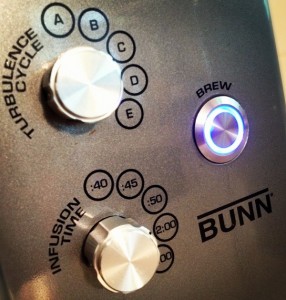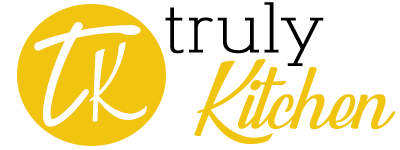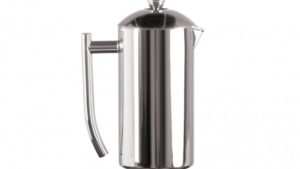Coffee is surprisingly fussy. Unlike wine, it’s a beverage that is better fresh, and doesn’t age well. Unlike beer or many spirits, it can be great either hot or cold, and doesn’t have a recipe- it’s water and beans and that’s it. The closest comparison is probably chocolate, where bean origin matters as much as how it is prepared and served. For coffee snobs- or aficionados, it basically depends on who you’re talking to- making coffee is not necessarily a simple process. We love a French press, great for groups, and we love the Aeropress for it’s portability and simplicity. But we love the latest kitchen gadget even more, an appliance that allows us repeatable results, and to explore different sides of the exact same coffee.
For most people, coffee begins and ends in the cup. If you’re one of those folks, today’s piece of gear is not for you- but you might want to get it for the java lover who has everything. The Bunn Trifecta MB is a consumer version of their high-end commercial Trifecta brewing system, an awesome advance in coffee technology. Where most coffee brewers use a simple drip system, this one uses a patented technology they call Air Infusion. And it works well with tea too! It’s not quite as simple as a single-cup brewer, but offers much better results than almost any other home method, thanks to the highly adjustable settings. You can manually alter two basic elements of the process- the infusion time and the turbulence cycle, plus the amount of water- and experiment with different ways to make your coffee. Instead of altering just the grind and the amount of coffee- which you can also do here of course- you’ve got additional elements to play with, each of which affects the end results.
The user guide offers some basic suggestions, which we followed to a point- black teas for two minutes on A level turbulence, Ethiopian coffees on the same level for 40 seconds, Sumatras with a longer 50 second time frame and the highest level of turbulence.

But we also tested the same amount of coffee with the same grind, and brewed a few cups with the different settings. While we didn’t quite use every factor and combination, it was immediately obvious to tasters when we, say, over-extracted the Ethiopian. Further, it was much easier to tell the difference between excellent coffee (Brooklyn Roasting Company or Blue Bottle) versus a more average blend (Starbucks, Dunkin Donuts). The latter pair tasted bitter, a bit astringent, with no real character- while top-notch beans stood out further from the pack than with other brewing methods. You can alter acidity and bring out certain tasting notes as desired, accentuating their natural character- nuttiness and earthiness, for example, stands out more on Indonesian blends while our Ethiopian Sidamo Aleta Wondo was fruitier and brighter.
Granted, we would’ve liked the ability to alter the temperature as well- that’s the reason white and green teas are not recommended for us in the Trifecta MB, the water temp is too high for those delicate leaves. Of course, then we would basically have the (very expensive, and now Starbucks-exclusive) Clover machines- which are great, and we definitely suggest trying them out if you find one. It can take longer to make your cup of coffee with the Trifecta, and you’re looking at a cup at a time, not a pot. Beyond that, the look of the machine was off-putting to some folks and ‘awesome’ to others, both groups who thought the unit came straight of a scientist’s laboratory- an impression helped by the graduated beaker chamber. You can’t open the chamber to stir mid-brew, and you might get a few fine grounds in the bottom of your cup- you want a coarser grind for the Trifecta but we had best results with a drip-size, not French press-level coarseness. We used our trusty Baratza Vario-W to dial in our grind, and kept it the same across experiments.
We loved the process and visually watching it unfold, and especially appreciated the inclusion of a digital scale in the package (essential for ensuring consistent coffee amounts, since humidity can really affect how much a “scoop” holds). There are also two brew chambers included, so you can use one for tea and the other for coffee. As owners of a new coffee shop, we definitely wished we could get the commercial version for our store- the results were just that much better, and it really did bring out the best in our coffee beans. The build quality is high, and clean-up is surprisingly simple, thanks in part to the espresso puck-like nature of the resulting coffee grounds. The Trifecta MB isn’t cheap- in fact, it’s one of the most expensive coffee machines we’ve tried out- but it’s a revelation. If you have a passion for coffee, and like experimentation, this is the perfect coffee setup for your home. Available now, online and in stores, for around $550.

